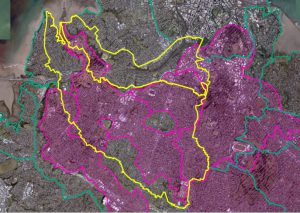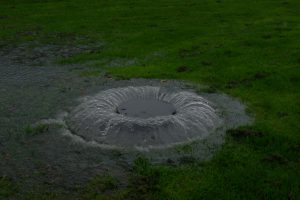Plan for Meola & Motions Creeks and Volcanic Aquifer
Liz October 1st, 2017
Te Tatua-a-Riukiuta Aquifer and the Waititiko – Waiateao Creeks
Inspired by the commitment of the Puketapapa Local Board to Te Auanga Oakley Creek, we joined with the Weona walkway community group and approached Albert Eden Local Board regarding protection and enhancement of Meola and Motions Creeks. We proposed that the AELB annual plan include a vision for both creeks, for Council and Community groups to work towards. We have asked Puketapapa and Waitemata Boards also to contribute as key landmarks such as Te Tokaroa Meola Reef, Western Springs and Three Kings all play a major role in the Meola-Motions natural landscape.
Our catchments our the largest on the isthmus and have many different communities of interest. Both streams have poor water quality. Over centuries they have been cut up 
by public works including national roads and other infrastructure; stormwater and wastewater from whole suburbs disappears, surfacing several kilometres away in local parks like Kerr Taylor reserve. The map shows Motions and Meola catchments in yellow, and the underlying aquifer in pink.
We are entering a time of great change with a $1 billion central Interceptor and Chamberlain Park projects causing landscape changes. We feel the community needs a ‘big picture’, partly to provide a background for the community work between Watercare and Meola Forum on Meola catchment changes from Central Interceptor. We also felt it could boost recognition of the need for a (formal and informal) mountain to sea path way to connect communities for cyclists and walkers.
Here is our draft plan. Please read it and let us know what you would add or change. We welcome your input. Waititiko – Waiateao Vision
[Contributing Authors: Jeanette Budgett (Unitec Institute of Technology), Sandra Anderson (University of Auckland). With thanks for contributions from Sharon Eccleshall, Andrew Mackintosh, Nick Goldwater and others.]
We look forward to progressing this plan and vision for the community.

